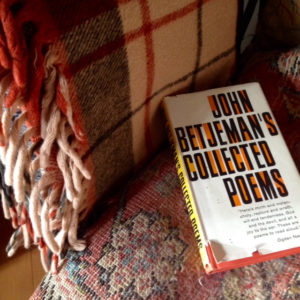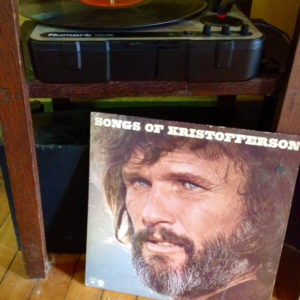Just in time for the weekend, here’s a little list of some of the things I’ve been listening to and reading this week, some of it online — Storyboard included, natch — and some of it on vinyl or actual ink and paper.
Two of my biggest loves are narrative journalism and music, and I’m lucky that my days are filled with both. When reading stories, I get inspired by songs I think fit the article’s theme — a soundtrack. Here are a couple of this week’s Storyboard articles, and their soundtracks:
Annotation Tuesday! Jeff Maysh and “The rise and fall of the Bombshell Bandit.” It’s very cool when an annotation (or the Q&A that precedes it) reveals something personal about the writers that helps explain why they pursue the kind of stories they do. In this piece, Jeff Maysh tells Harper Davis about his childhood in London:
It all began when Maysh was growing up in south London around the police and crime. When he was 14, a close family member, an undercover cop, was sent to prison, and Maysh visited him there often.
“I guess it kind of exposed me to both worlds — both law enforcement and the criminal fraternity,” Maysh said. It was also his first exposure to journalism. “When this family member was arrested, the phone started ringing in the house and it was reporters from The Daily Mirror. I remember thinking, ‘Wow, this is kind of cool. How’d they get the house number?’ Because we weren’t listed in the directory.”
Soundtrack: “Betty’s a Bombshell,” by Grouplove. A pretty great pop song, which I chose for its title, but this lyric fits the story: “It’s a great escape from your heartache, it’s your replay.”
5 Questions: Robert Sanchez and “Colorado Springs’ Identity Crisis.” I can’t tell you how pleased I am to launch a series on Storyboard called “Tomorrow’s journalists exploring the masters of today.” Last semester, Pulitzer-winning journalist Jacqui Banaszynski asked her students at the Missouri School of Journalism to give the Storyboard treatment to their favorite longform stories. We’ll be running the results over the next several months. It’s so heartening to see that in this short-attention-span world, millennials like these students still love beautiful writing. In this, the first installment of the series, recent grad Paul Albani-Burgio talks to 5280 magazine writer Robert Sanchez about avoiding caricature in an extreme city and capturing “a sense of place in an authentic way.”
Soundtrack: “The Next Generation,” by Neneh Cherry. OK, I’m dating myself here, because I bought the album this song is on, “Raw Like Sushi,” when it came out — gulp — 25 years ago. “Buffalo Stance” was one of the best pop songs of that year. Listen to it and see if you think it could be one of the best songs of this year. Neneh Cherry was (and no doubt still is) fierce!
What I’m reading online: It took no more than a tweet from Esquire Classic mentioning the names Kerouac and Sinatra to click on the link. (Actually, I probably would have clicked on the link if just one of the names were mentioned, but two of them? Try and stop me.) A new book, The Unknown Kerouac: Rare, Unpublished & Newly Translated Writings, includes an essay Kerouac wrote in 1946, when the teenyboppers who screamed at his every note were disturbing gentle parents everywhere. I prefer the later Sinatra of the 50s and even 60s, so Kerouac’s description is a good reminder of how it began:
Many young men appreciate Sinatra’s sense of loneliness and longing, a feeling which Sinatra sensitively assumes from the mood of the generation around him and expresses with a lyrical and sometimes poetical tenderness that has been mistaken by an older generation for “bawling and caterwauling.” To young America, serious, sad, and wistful, it is no caterwauling, it is the poetry of its time, and in it, in the longing of Sinatra’s soft tones and prayerful sustaining notes, is contained most of their own youthful melancholy.
Of course, then I clicked on the other Kerouac-related pieces in the archives. I’m surprised that Esquire doesn’t have a large Kerouac library. (I do love that next to a piece in which he “explains” the Beat philosophy, there’s an ad for a very anti-Beat businessman in an early “Mad Men”-era fedora.)
 What’s on my bedside table: Last weekend I found “John Betjeman’s Collected Poems” at my favorite used bookstore. The cover line from Ogden Nash is wonderful: “Here’s mirth and melancholy, rapture and wrath, wit and tenderness, God and the devil, and all a joy to the ear. These are poems to read aloud.” (I have a friend who told me that he and his wife regularly read aloud to each other, which I found the most romantic thing possible.) I love one of his longer poems: “Beside the Seaside.” It has the sweep of a novel set during a British seaside holiday — the adolescent anxiety, the family squabbles, even the class system. This bit!
What’s on my bedside table: Last weekend I found “John Betjeman’s Collected Poems” at my favorite used bookstore. The cover line from Ogden Nash is wonderful: “Here’s mirth and melancholy, rapture and wrath, wit and tenderness, God and the devil, and all a joy to the ear. These are poems to read aloud.” (I have a friend who told me that he and his wife regularly read aloud to each other, which I found the most romantic thing possible.) I love one of his longer poems: “Beside the Seaside.” It has the sweep of a novel set during a British seaside holiday — the adolescent anxiety, the family squabbles, even the class system. This bit!
And here it was the tragedy began
That life-long tragedy to Jennifer
Which ate into her soul and made her take
To secretarial work in later life
In a department of the Board of Trade.
I won’t spoil your pleasure in finding out what the tragedy was. Go find a copy in your own used bookstore.
 What’s on my turntable: Although I spend most of my time listening to music on Spotify, sometimes I want to hear the needle touching down on vinyl. This week’s vinyl: Songs of Kristofferson, by Kris Kristofferson. He’s such a gifted lyricist. “Sunday Morning Coming Down” could easily be a poem. (Read that one aloud.) And “Loving Her Was Easier (Than Anything I’ll Ever Do Again)” breaks my heart. I guess my only reservation about him is that he writes the same melody for several of his songs. Play this game: Sing the lyrics of one song as you listen to another. They’re like this overlay on the same tune.
What’s on my turntable: Although I spend most of my time listening to music on Spotify, sometimes I want to hear the needle touching down on vinyl. This week’s vinyl: Songs of Kristofferson, by Kris Kristofferson. He’s such a gifted lyricist. “Sunday Morning Coming Down” could easily be a poem. (Read that one aloud.) And “Loving Her Was Easier (Than Anything I’ll Ever Do Again)” breaks my heart. I guess my only reservation about him is that he writes the same melody for several of his songs. Play this game: Sing the lyrics of one song as you listen to another. They’re like this overlay on the same tune.
If you want to chat about storytelling (or music), you can reach me at editor@niemanstoryboard.org. Or you can find me at @karihow on Twitter.


